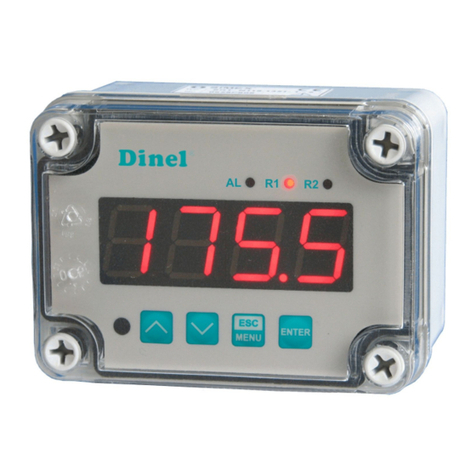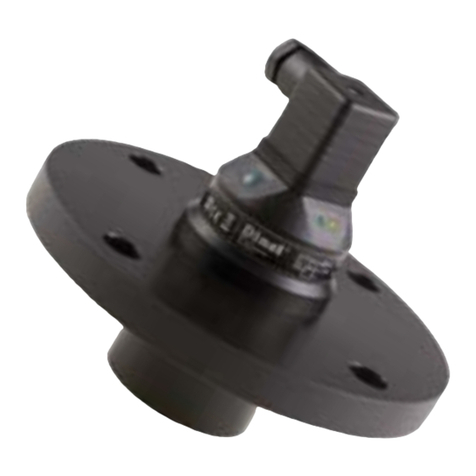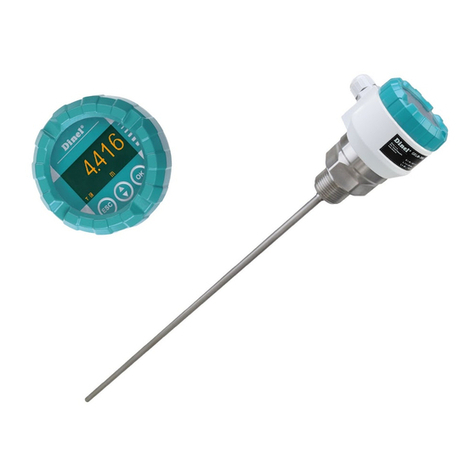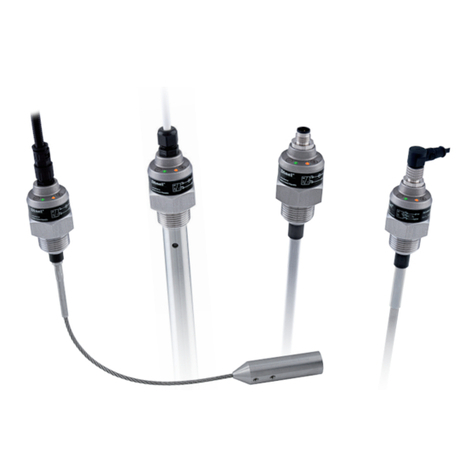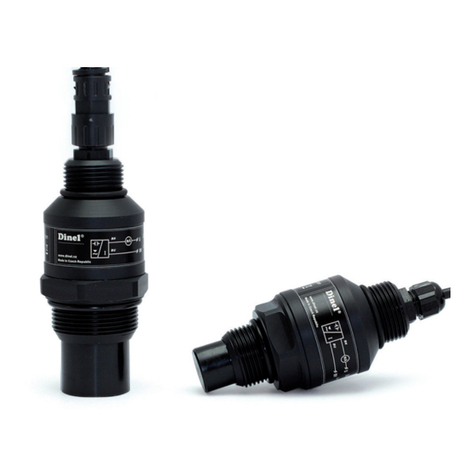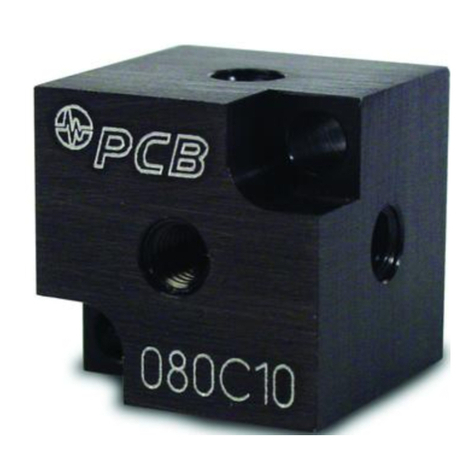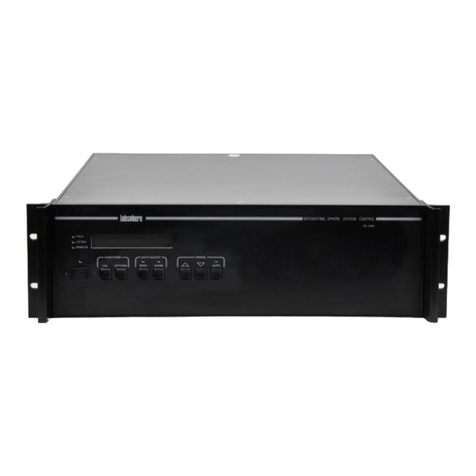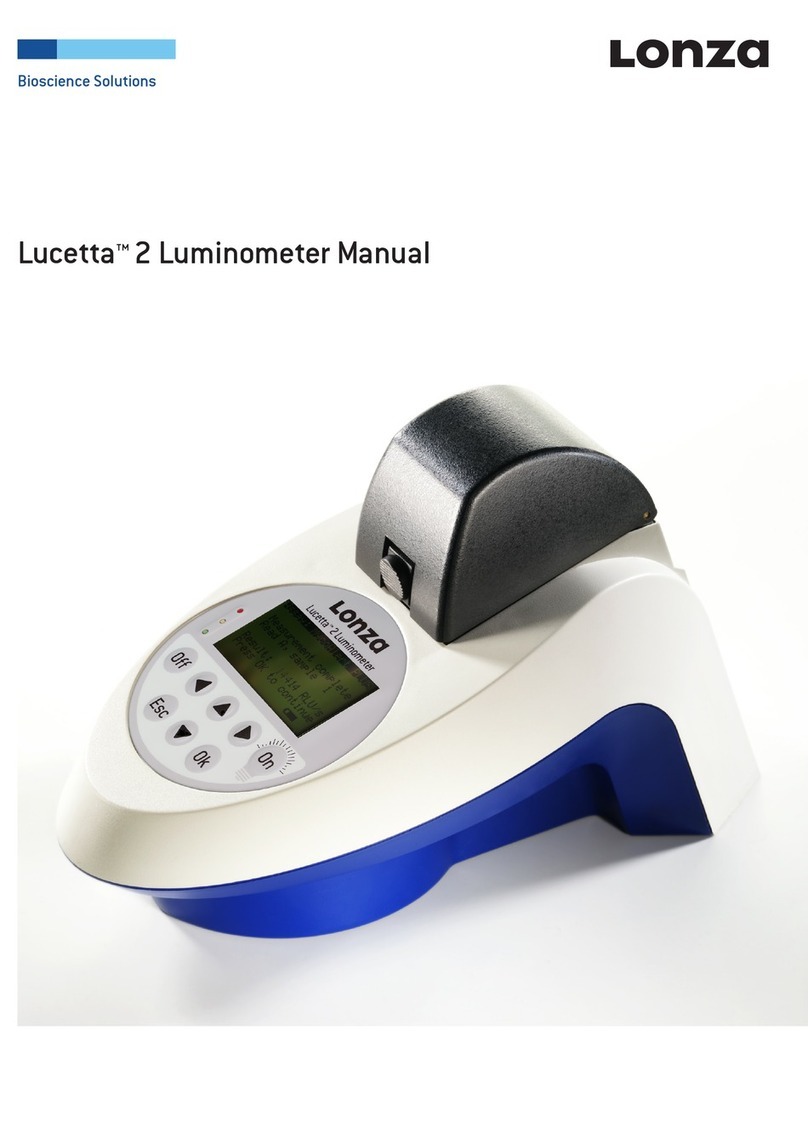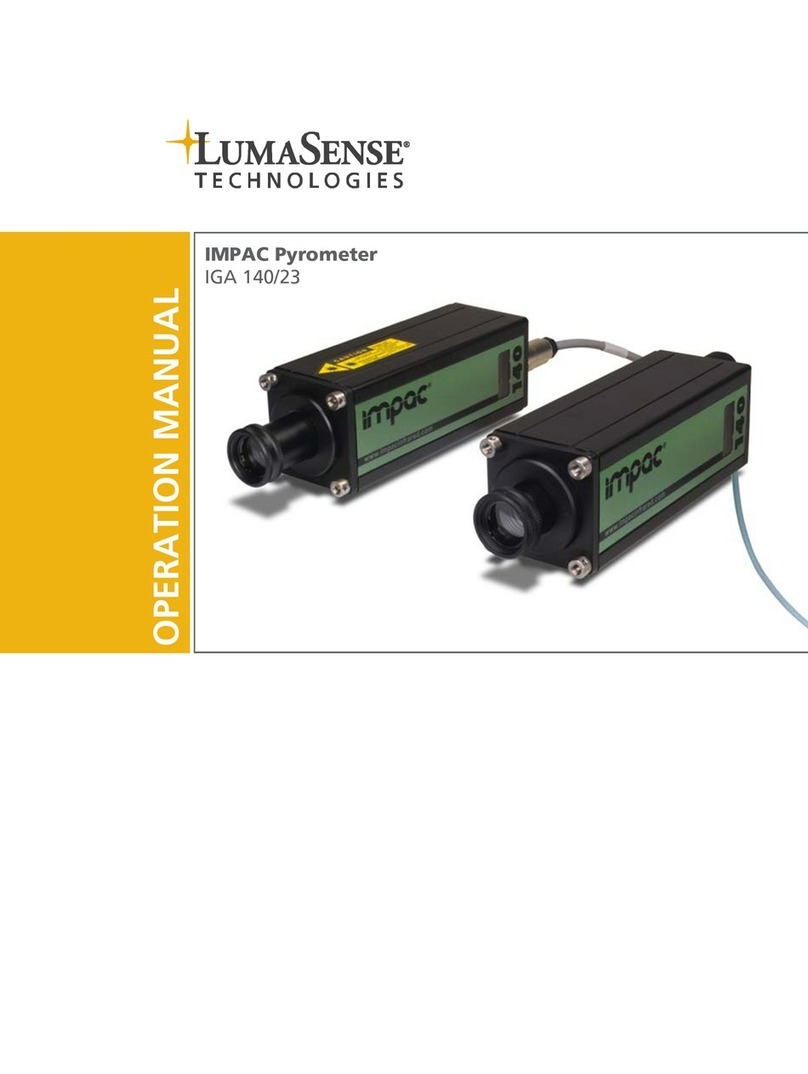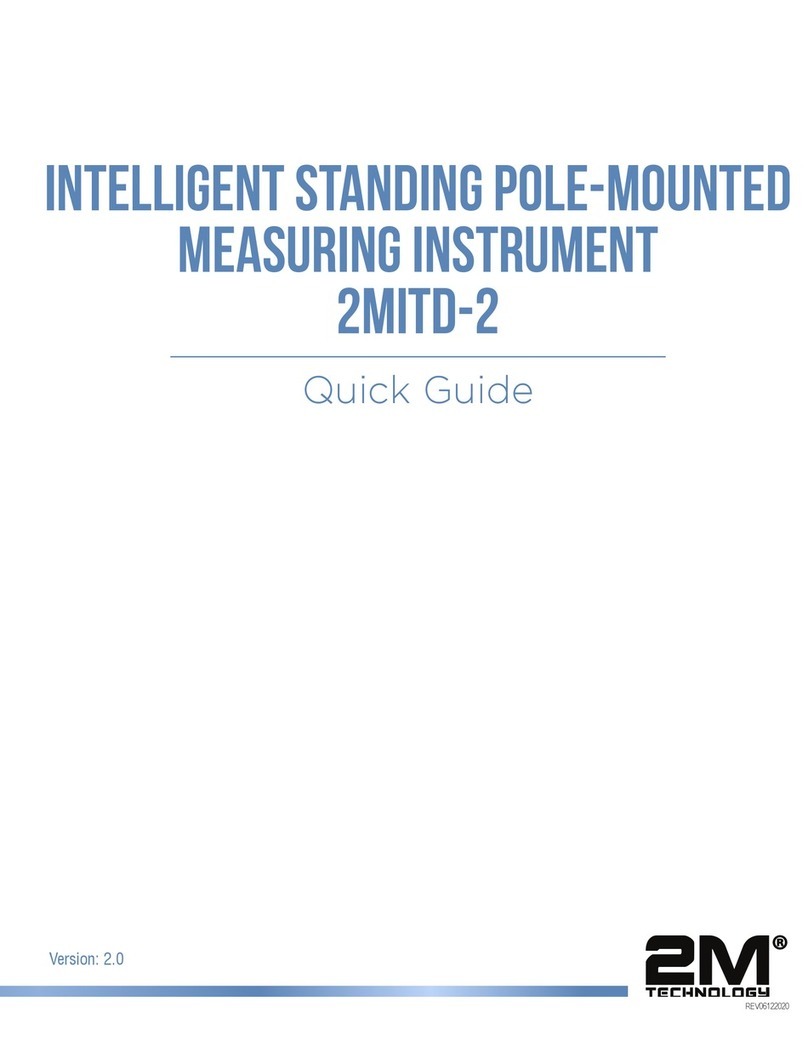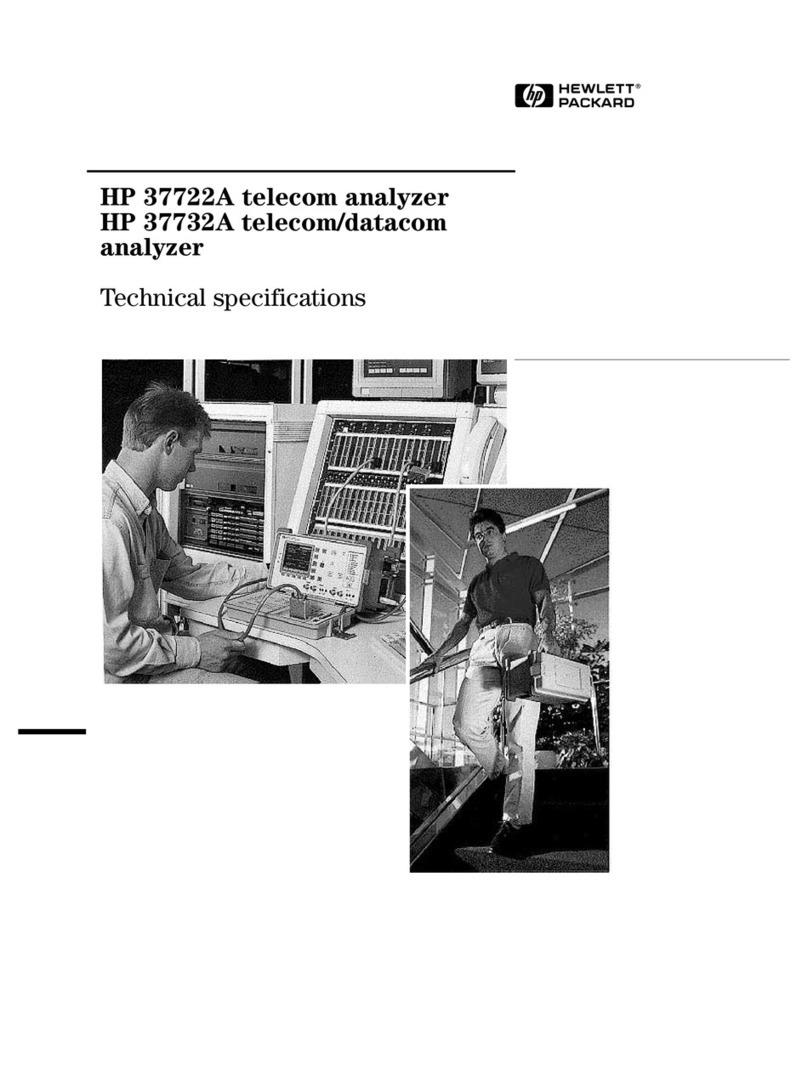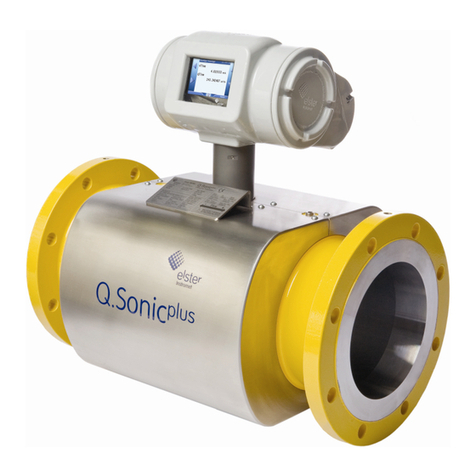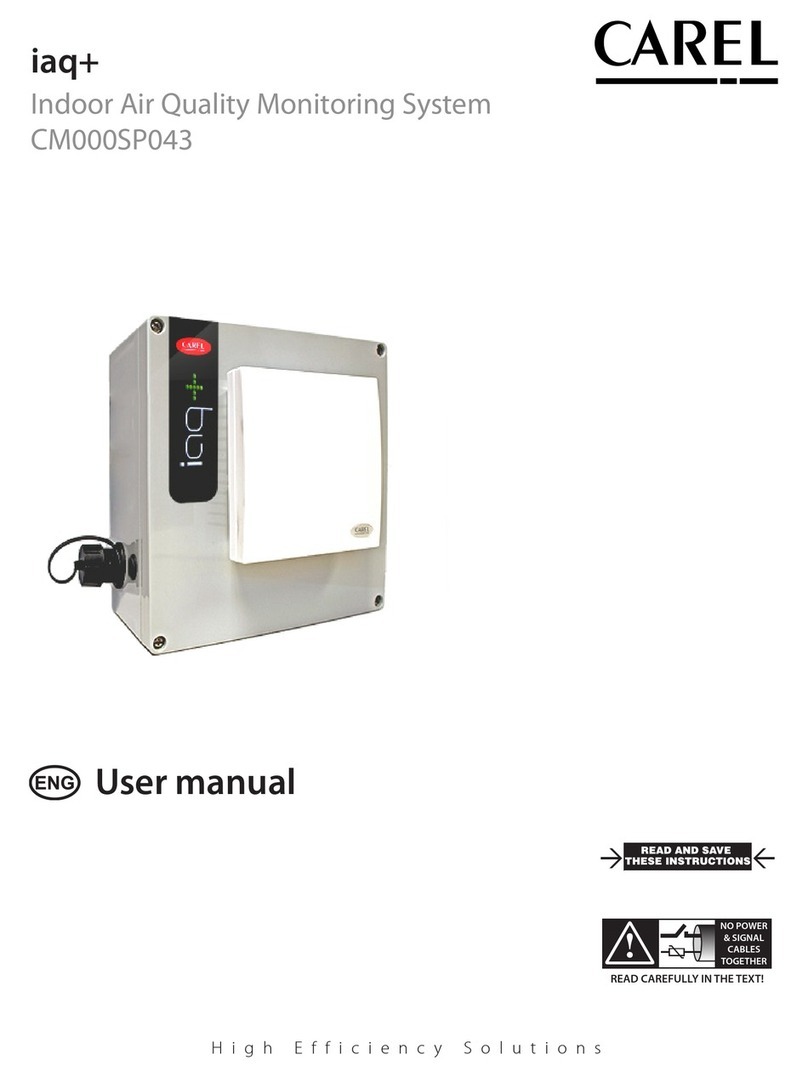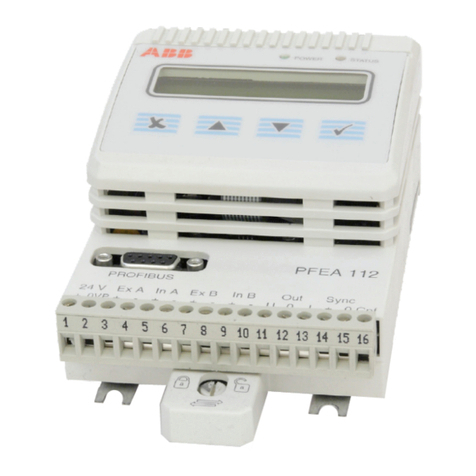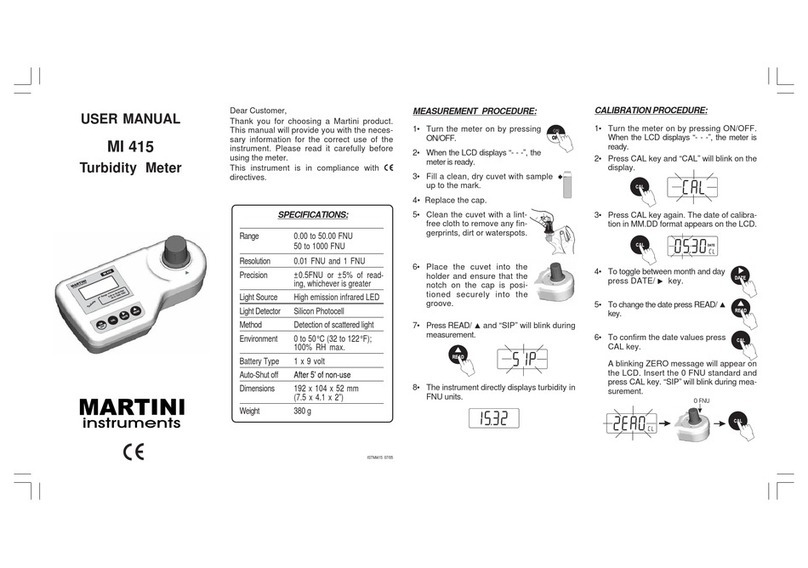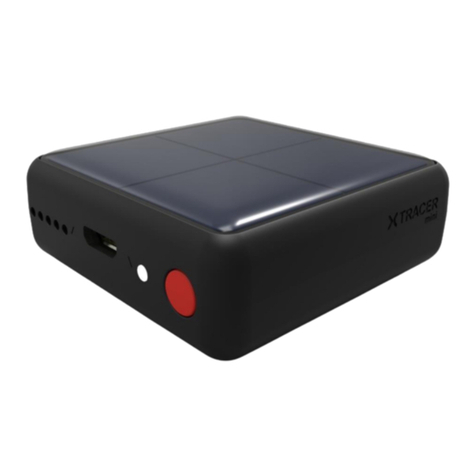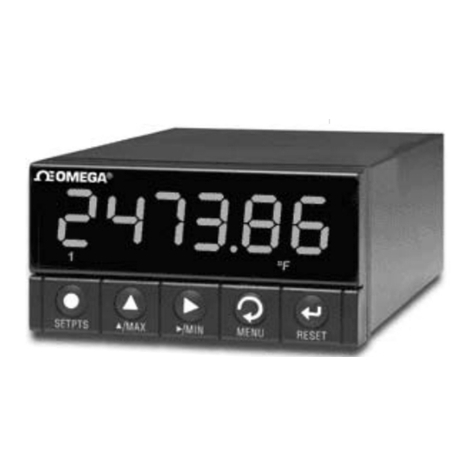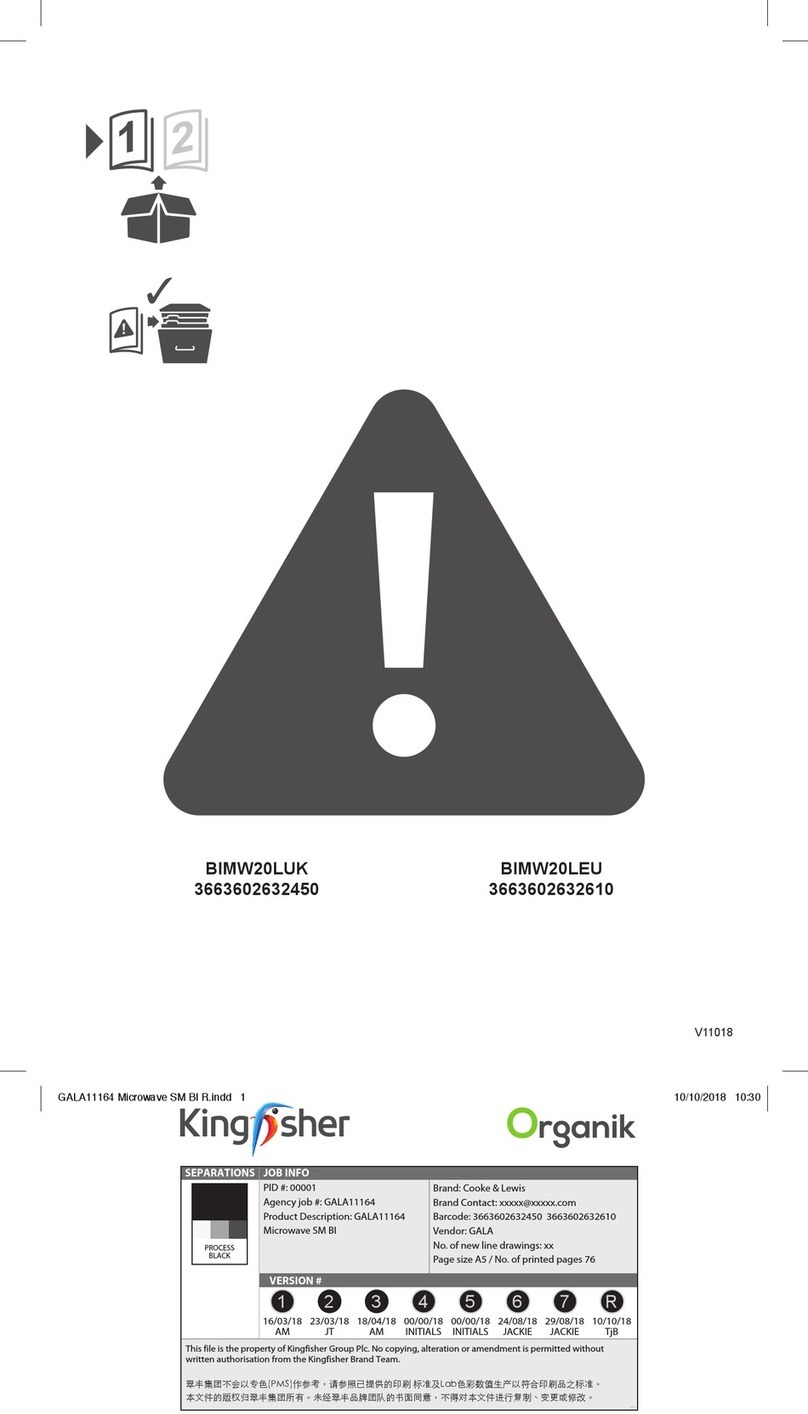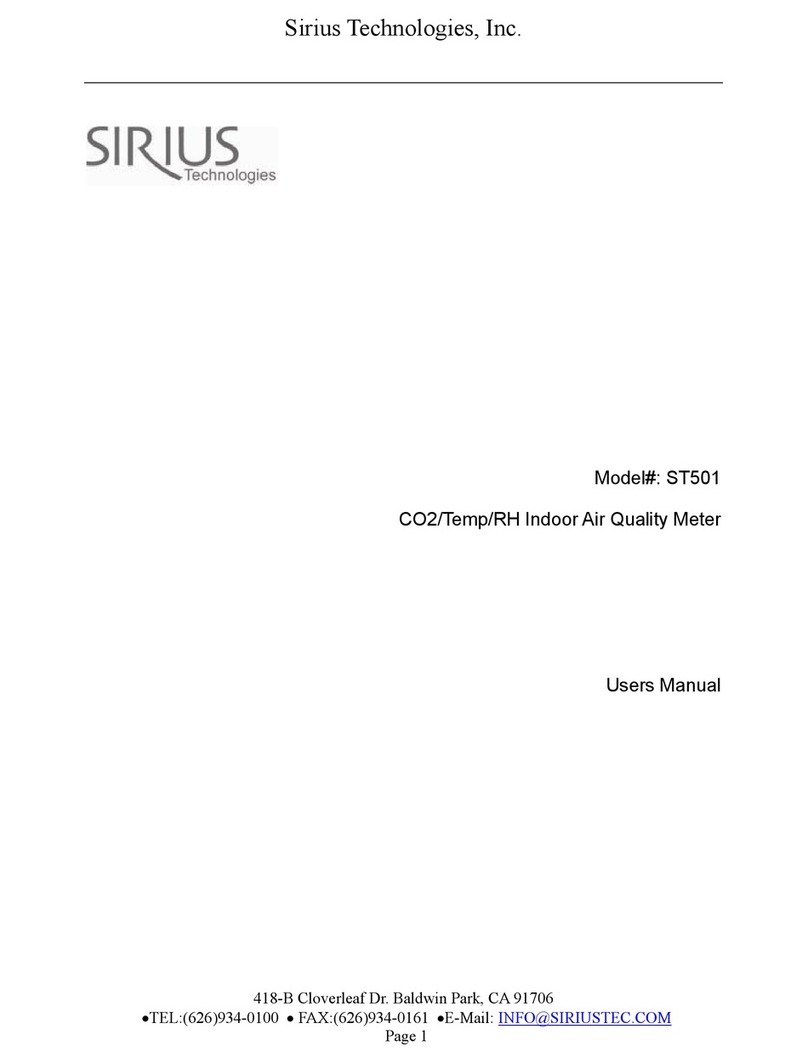Dinel ULM-53 series User manual

Before the rst use of the level meter please read carefully the instructions provided in this User's Guide
and keep it for future use. The manufacturer reserves the right to make changes without previous notice.
INSTRUCTION MANUAL
průmyslová elektronika
Ultrasonic level Meters UlM – 53
Ultrasonic level sensors Uls – 53


TABLE OF CONTENTS
1. Safety .......................................................................................................................................4
2. Packing, transportation and storage ....................................................................................4
3. Measuring principle................................................................................................................5
4. Range of application ..............................................................................................................5
5. Features of variants................................................................................................................5
6. Dimensional drawings............................................................................................................6
7. Installation and putting into operation .................................................................................6
8. Installation instructions .........................................................................................................7
9. Electrical connection............................................................................................................11
10. Set-up elements ....................................................................................................................14
11. Status indication...................................................................................................................15
12. Setting....................................................................................................................................16
12.1. Setting procedure for level meters ULM-53.................................................................17
12.2. Setting procedure for level sensors ULS-53................................................................19
13. Protocol Modbus...................................................................................................................21
14. Order code.............................................................................................................................21
15. Accessories...........................................................................................................................22
16. Safety, protection, compatibility and explosion proof design .........................................22
17. Use, operation and maintenance ........................................................................................23
18. General conditions and warranty........................................................................................23
19. Marking of labels ..................................................................................................................24
20. Specications .......................................................................................................................25

UL_–53 © Dinel, s.r.o.
4
Any operations described in this User's Guide may only be performed by trained person-
nel or by an authorized person. Warranty and post-warranty repairs shall be performed
exclusively on the manufacturer's site.
Improper use, installation or setting of the level meter may lead to crashes in the application
(overlling of the tank or damage to system components).
The manufacturer is not responsible for improper use , work losses resulting from direct
or indirect damage and expenses incurred during installation or use of the level meter.
1 .
SAFETy
USEd SymBOLS
In order to provide maximum safety of processes, we have dened the following safety and informa-
tion instructions. Each of the instructions is marked with an icon.
Alert, warning, danger
This symbol informs about particularly important instructions for installation and operation
of the equipment or about dangerous situations that may occur during installation and op-
eration. Failure to comply with the instructions may cause failures, damage or destruction
of the equipment, or may cause injuries to persons.
Information
This symbol informs about particularly important characteristics of the equipment.
2 .
PACkAgiNg, TrANSPOrT ANd STOrAgE
The ULM–53 or ULS-53 device is packed in a cardboard packaging and the whole shipment is
placed in a cardboard box. The cardboard box is suitably lled to prevent mechanical damage dur-
ing transport.
Remove the device from the package just prior to its use to prevent possible damage.
Transport to the customer is provided by a forwarding company. Subject to prior arrangement, per-
sonal pick-up of the ordered goods is possible in the company's seat. Upon receipt, please check
whether the shipment is complete and corresponds to the extent of the order, or whether during the
transport the packaging and the device has not been damaged. Do not use a device apparently
damaged during transport and contact the manufacturer to resolve the situation.
If the device is transported further, it shall be wrapped in the original packaging and protected
against shocks and weather.
Store the device in its original packaging in a dry place, sheltered from weather, with humidity up
to 85% without the effects of chemically active substances. The range of storage temperature is
-20°C to +60°C.
Level meters (sensors) of variants ULM (ULS)–53_–01, 02, 06, 10 are tted with protective caps
to prevent damage to the ultrasonic transducer. Remove the caps before commissioning!

5
© Dinel, s.r.o. UL_–53
3 .
mEASUriNg PriNCiPLE
The ULM®ultrasonic level meters and the ULS®ultrasonic level sensors are compact measure-
ment devices containing an electro-acoustic transducer and an electronic module. Using the
electro-acoustic transducer, level meters and level sensors transmit a series of ultrasonic puls-
es that spread towards the surface. The transducer then receives the reected acoustic wave,
which is subsequently processed in the electronic module. The current distance to the surface
level is calculated from the time of spread of individual pulses towards the surface and back and
the temperature measured in the tank. The output is then set on the basis of the surface height.
The outputs of the ULM level meter are current 4 -20 mA, voltage 0 - 10 V and industrial line RS-485
with Modbus RTU communication. The output of the ULS sensor consists of a PNP transistor with
an open collector and a two-state current switch 4 mA / 20 mA.
4 .
rANgE OF APPLiCATiON
Thanks to the proximity principle employed, the devices are suitable for continuous or limit meas-
urement of the level of liquids, waste water, sludge, suspensions, adhesives, resins in various open
and closed vessels, sumps, open channels and drains. Applicability for measuring the surface level
of loose materials is limited, the range of measurement is shorter there. Setting is carried out either
using two buttons or a magnetic pen or by remote setting in case of Modbus RTU output. The device
is equipped with optical indication of its state (RUN) and the setting process (STATE). It is manufac-
tured in designs for normal (N) and explosive atmospheres (Xi).
UL_–53_–01–_ measurement range 0.1 m to 1 m, all-plastic design, source
of PVDF (polyvinylidene uoride), mechanical connection
with thread G ¾.
UL_–53_–02–_ measurement range 0.20 m to 2 m, all-plastic design, source of PVDF,
mechanical connection with thread G 1''.
UL_–53_–06–_ measurement range 0.20 m to 6 m, all-plastic design, source of PVDF,
mechanical connection with thread G 1 ½".
UL_–53_–10– measurement range 0.4 m to 10 m, all-plastic case, source of PVDF,
mechanical connection with thread G 2 ¼“.
UL_–53_–20–_ measurement range 0.5 m to 20 m, all-plastic case, source of PVDF,
mechanical connection with ange of aluminium alloy.
5 .
FEATUrES OF vAriANTS

UL_–53 © Dinel, s.r.o.
6
6 .
dimENSiONAL drAwiNgS
ground
terminal
UL_–53_–02–_ UL_–53_–06–_
UL_–53_–10–_ UL_–53_–20–_
Al alloy
This procedure includes the following three steps.
•
iNSTALLATiON
•
ELECTriC CONNECTiON
•
SETTiNg
7 .
iNSTALLATiON ANd PUTTiNg iNTO OPErATiON
UL_–53_–01–_

7
© Dinel, s.r.o. UL_–53
• The device is installed in a vertical position into the upper lid of the tank or reservoir using a
lug, a fastening nut or a ange in such a way that the axis of the device is perpendicular to the
surface level of the measured liquid (Fig. 1). Tightening
of the level meter in the welding ange (or. by the xing
nut) must be done only by hand *. The device shall be
installed in places with no risk of mechanical damage
to the front of the sensor.
• The minimum distance from the tank wall when installing
into the lid or the ceiling of the tank are listed in Fig. 3. In
the case of device installation close to smooth wall of the
tank it is not necessary to observe the minimum distance,
conversely it is suitable to shorten this distance.
• When installing in an open channel (sump, drain, etc.),
install the device onto a console as close as possible to
the expected maximum level.
• The reference plane for the measurement is the lower
edge of the transducer (Fig.2). In compliance with the
measuring principle, no signals reected in the area
directly below the device (dead zone) can be evalu-
ated. The dead zone (Fig. 2) determines the minimum
distance possible between the device and the highest
level. The minimum distances to the medium are listed
in the chapter "Technical specications".
• The device shall be installed so that the surface does
not interfere with the dead zone when the tank is lled
to the maximum. If the measured surface interferes with
the dead zone, the device will not measure properly.
d – distance from tank wall
c – maximum reach of the device
m – dead zone
UL_–53–01; 02;10 d> c/12
(min. 200mm)
UL_–53–06 d> c/8
(min. 200mm)
UL_–53–20 d> c/10
(min. 200mm)
8 .
iNSTALLATiON iNSTrUCTiONS
Fig. 1: Correct installation of the sensor,
perpendicular to the liquid surface
Fig. 2: Dead zone of the device Fig. 3: Distance of the device from
the tank wall
reference plane for
the measurement
*) To loosen the level meter can be used suitable wrenche.
Fig. 4: Installation of the device out of reach of lling circulation
• Do not install the device in or
above the lling point (Fig.
4). The measurement could
be affected by the inowing
medium.
min. 10 mm

UL_–53 © Dinel, s.r.o.
8
It is recommended to avoid placing the sensor into a narrow inlet.
UL_–53–01; 02;
06; 10
a< 1.5b
b> 100mm
UL_–53– 20 a< 1.5b
b> 150mm
Fig. 5: Installation of the device in the installation neck
!
• If the level sensor is mounted to bottlenecks and places with barriers, or near uneven walls or the
lling area, where the transmission signal could be distorted, we recommend using a guide tube
(acoustic horn). The tube must be made from a single material with a smooth inner surface (see
image 6 a 7). The minimum tube diameter must have the dimension „h“ according to see to table
at image 7. The construction of the guide tube we recommend to consult with the manufacturer.
Fig. 6: Short guide
tube installation
h
ventilation holes
sleeves for
mounting
h
Fig. 7: Total guide
tube installation
Fig. 8: Horn adapter installation
Horn
adapter ST
• Horn adapter ST–G0,75 (for ULM–53_–01), ST–G1 (for
ULM–53_–02), ST–G1,5 (for ULM–53_-06) or ST–G2,25
(for ULM–53_–10) for improved reception of the transmitted
signal can be used in open channels, sumps, tanks, etc.
• Horn adapter ST increases the directivity of the emitted
acoustic waves, improves the reception of weak echoes
(unstable surface level, loose materials, foam on the level)
and reduces the risk of falsereections.
• The horn adapter is installed on the device via process
connection G3/4“ (ST–G0,75) or G1” (ST–G1) or G1½”
(ST–G1,5), or G 2 ¼“ (ST–G2,25).
a – neck height from source edge
b – neck width
m – dead zone
UL_–53–01 h ≥ 50 mm
UL_–53–02 h ≥ 70 mm
UL_–53–06 h ≥ 100 mm
UL_–53–10 h ≥ 150 mm
UL_–53– 20 h ≥ 200 mm
• Only if the maximum level in the tank gets into the dead zone, the device shall be mounted into
a higher installation neck. The tank can be then lled nearly up to the maximum volume. The
neck’s inner surface shall be even and smooth (without edges and welded joints), the inner
edge should be rounded in the spot where the ultrasonic wave leaves the pipe. Choose the
largest possible neck diameter, but keep the neck height as low as possible. The recommended
dimensions of the inlet neck are listed in Fig. 5.

9
© Dinel, s.r.o. UL_–53
• The ultrasonic signal can be scattered or attenuated if the
surface is moderately stirred or rippled (due to a mixer, inow
of liquid, etc.). This may result in reduction of the measure-
ment range or unreliable operation of the device (Fig. 11).
For a rippled or swirling level, you can use the directional
horn to eliminate scattering of the ultrasonic signal.
!
Fig. 11: Moderately stirred surface
• The site for installing the level meter needs to be chosen so that the emitted acoustic signal is not
affected by nearby objects (reinforcements, supports, brackets, ladders, heating elements, mixers,
etc.). These obstacles may result in false rebounds, increasing measurement inaccuracy (Fig. 9).
x – distance from the edge of the longest
object
c – maximum reach of the level meter
UL_–53–01;02 ;10 x>c/12
(min. 200mm)
UL_–53–06 x> c/8
(min. 200mm)
UL_–53–20 x> c/10
(min. 200mm)
Fig. 9: Minimum distance from close objects in the tank
• Foam may be produced on the surface of the measured liquid
during lling, mixing and other processes. The thick foam
signicantly absorbs the ultrasound signal and may cause
malfunction of the device (Fig.10). In those cases it is neces-
sary to test the device in advance or contact the manufacturer .
In case of a thin layer of foam, it is also possible to use
directional horn for improving receipt of the reected echo.
!
Fig. 10: Thick foam on the surface
!
Fig. 12: Strongly stirred
surface
Fig. 13: False reection from
mixer blades
• The device should not be installed in places
with the risk of falsereections of the ultra-
sonic signal from the mixer’s blades (Fig. 13).
• False surface reections of the ultrasonic
signal and unreliable operation of the device
might result from the mixer’s rotating blades
that ripple the surface level(Fig. 12).

UL_–53 © Dinel, s.r.o.
10
• The measuring device shall not be installed in places
with direct sunlight and shall be protected against weather
conditions. Direct sunlight affects the built-in temperature
compensation!
• If installation in places with direct sunlight is inevitable, it is
necessary to mount a shielding cover above the device
(Fig. 15).
• It is advisable to keep cable under the cable gland (sag-
ging down) as shown in Fig. 16 to prevent penetration of
moisture. Rain and condensing water can be therefore
drained away freely.
• The cable gland as well as the connector shall be tightened
sufciently to prevent penetration of moisture.
Fig. 15: Shielding cover against
direct sunlight
Fig. 16: Protection against
penetration of moisture
Fig. 14: Level meter installation in silo or hopper
horn
adapter
• In case the level of bulk solids is meas-
ured, the measurement range is reduced
due to absorption of acoustic waves by a
bulk medium. Shortening of the measur-
ing range occurs by up to 50% depending
on the grain size. We therefore recom-
mend selecting a level meter with higher
range than the maximum distance to the
medium. It is also appropriate to use a
directional horn (see image 14), which
reduces the shortening of the measur-
ing range, because it better concentrates
acoustic energy while preserving the
same beam angle, and improves the
sensitivity when receiving the reected
echo. We recommend to consult the use
with the manufacturer.
In the case of use for an aggressive medium is necessary to prove the chemical compatibility of
used materials of the sensor (Tab. Used materials on page 26). The guarantee ceases when the
product is chemically damaged.

11
© Dinel, s.r.o. UL_–53
Connection through ISO connector
The ULM level meter or ULS level sensor with a G type cable gland are
connected to processing (display) units by means of a cable with an
outer diameter of 6 to 8 mm (recommended wire cross-section 0.5 to
0.75 mm2), via a detachable ISO connector with inner screw terminals,
which is part of the delivery. The connection diagram and the inner view
of the connector are shown in Fig.17 and 18. Non-detachable connector
IP67 with PVC cable 5 m long can be supplied as an extra option.
legend:
BK – black BN – brown
BU – blue NC – not connected
0 V
Uout
+U
0 V
+U
9 .
ElEctric connEction
Connecting the cable to the device:
1. Unscrew the connector from the device
body using a suitable screwdriver.
2. Remove the inner part of the connector us-
ing a at screwdriver (insert the screwdriver
in the gap marked with an arrow).
3. Unscrew the cable gland
and pull the supply cable inside the con-
nector.
4. Connect the cable wires to the screw ter-
minals as shown in Fig. 17 (current output
4-20 mA), Fig. 18 (voltage output 0-10 V),
Fig. 19 (
S
type output) or Fig. 20 (
P
) type
output. Tighten the terminals rmly.
5. Insert the terminals back in the connector
so that the NC terminal points away from
the cable gland. Fasten the cable gland.
6. Check the sealing on the connector and at-
tach the connector back to the device body.
Fig. 17: Connection diagram of the ULM level meter
(variant –I) and inside view of the connector
Fig. 18: Connection diagram of the ULM level meter
(variant –U) and inside view of the connector
BN ()1
BU ()2
mA +U
0V
V
+U
0V
U
Uout
V
+U
0V
U
Uout
mA +U
0V
+U
0V
BN (1)
BU (2)
BK (3)
+U
0V
BN (1)
BU (3)
BK (4)
BN ()1
BU (3)
BN ()1
BU ()2
BK (3)
BN ()1
BU (3)
BK (4)
BN ()1
BU ()2
mA +U
0V
mA +U
0V
BN ()1
BU (3)
BN ()1
BU ()2
mA +U
0V
V
+U
0V
U
Uout
V
+U
0V
U
Uout
mA +U
0V
+U
0V
BN (1)
BU (2)
BK (3)
+U
0V
BN (1)
BU (3)
BK (4)
BN ()1
BU (3)
BN ()1
BU ()2
BK (3)
BN ()1
BU (3)
BK (4)
BN ()1
BU ()2
mA +U
0V
mA +U
0V
BN ()1
BU (3)
Valid for: UL_-53_-_ _-_-_-G-_
Performance„G“
with connector ISO
Type ULS–53_–_ _–_–S–G–_
Positive supply pole +U is con-
nected to the brown wire or to
connector pin 1, negative pole
to the blue wire or to connector
pin 2.
Type ULS–53_–_ _–_–P–G–_
Positive supply pole +U is connected to
the brown wire or to connector pin 1,
negative pole to the blue wire or to con-
nector pin 2. Load is connected to the
black wire or to connector pin 3.
+U
0 V
Uout
+U
0 V
Fig. 19: Connection diagram of the ULS
sensor with S type output
(two-state current switch 4 mA / 20 mA)
Fig. 20: Connection diagram of the ULS sensor with P type
output (PNP) with an open collector
BN ()1
BU ()2
mA +U
0V
V
+U
0V
U
Uout
V
+U
0V
U
Uout
mA +U
0V
+U
0V
BN (1)
BU (2)
BK (3)
+U
0V
BN (1)
BU (3)
BK (4)
BN ()1
BU (3)
BN ()1
BU ()2
BK (3)
BN ()1
BU (3)
BK (4)
BN ()1
BU ()2
mA +U
0V
mA +U
0V
BN ()1
BU (3)
BN ()1
BU ()2
mA +U
0V
V
+U
0V
U
Uout
V
+U
0V
U
Uout
mA +U
0V
+U
0V
BN (1)
BU (2)
BK (3)
+U
0V
BN (1)
BU (3)
BK (4)
BN ()1
BU (3)
BN ()1
BU ()2
BK (3)
BN ()1
BU (3)
BK (4)
BN ()1
BU ()2
mA +U
0V
mA +U
0V
BN ()1
BU (3)

UL_–53 © Dinel, s.r.o.
12
Connection through M12 connector
The ULM level meter or ULS level sensor with a C type cable gland are connected to process-
ing (display) units by means of a cable with an outer diameter of 4 to 6 mm (recommended wire
cross-section 0.5 to 0.75 mm2), via a connector socket with a moulded cable (2 or 5 m long) or via
a detachable connector socket without a cable (see accessories). In this case connect the cable
to the inner socket pins under Fig. 21.
legend:
BN – brown
BK – black
BU – blue
output (BK)
0V (BU)
+U (BN)
1
3
4
0 V
+U
1
3
4
0 V
+U
Uout
Type ULM–53_–_ _–_–I–C–_
The positive supply pole +U is
connected to connector pin 1 or
the brown wire of the connected
cable, the negative pole is con-
nected to connector pin 3 or
the blue wire of the connected
cable.
Type ULM–53_–_ _–_–U–C–_
The positive supply pole +U is
connected to connector pin 1 or
the brown wire of the connected
cable, the negative pole is con-
nected to connector pin 3 or
the blue wire of the connected
cable. Output voltage is con-
nected to connector pin 4 or the
black cable wire.
Fig. 21: Inside view of the connector socket
Fig. 23: Connection diagram of the ULM level meter (variant –U)
and view of the connector
Fig. 22: Connection diagram of the ULM level meter (variant –I)
and view of the connector
BN ()1
BU ()2
mA +U
0V
V
+U
0V
U
Uout
V
+U
0V
U
Uout
mA +U
0V
+U
0V
BN (1)
BU (2)
BK (3)
+U
0V
BN (1)
BU (3)
BK (4)
BN ()1
BU (3)
BN ()1
BU ()2
BK (3)
BN ()1
BU (3)
BK (4)
BN ()1
BU ()2
mA +U
0V
mA +U
0V
BN ()1
BU (3)
BN ()1
BU ()2
mA +U
0V
V
+U
0V
U
Uout
V
+U
0V
U
Uout
mA +U
0V
+U
0V
BN (1)
BU (2)
BK (3)
+U
0V
BN (1)
BU (3)
BK (4)
BN ()1
BU (3)
BN ()1
BU ()2
BK (3)
BN ()1
BU (3)
BK (4)
BN ()1
BU ()2
mA +U
0V
mA +U
0V
BN ()1
BU (3)
Valid for: UL_-53_-_ _-_-_-C-_
Performance„C“
with connector M12
1
3
4
0 V
+U
Type ULS–53_–_ _–_–S–C–_
The positive supply pole +U is
connected to connector pin 1 or
the brown wire of the connected
cable, the negative pole is con-
nected to connector pin 3 or
the blue wire of the connected
cable.
1
3
4
0 V
+U
Uout
Type ULS–53_–_ _–_–P–C–_
The positive supply pole +U is
connected to connector pin 1 or
the brown wire of the connected
cable, the negative pole is con-
nected to connector pin 3 or the
blue wire of the connected ca-
ble. Load is connected to con-
nector pin 4 or the black cable
wire.
Fig. 24: Connection diagram of the ULS sensor with S type
output (two-state current switch 4 mA / 20 mA)
Fig. 25: Connection diagram of the ULS sensor with P type
output (PNP) with an open collector
BN ()1
BU ()2
mA +U
0V
V
+U
0V
U
Uout
V
+U
0V
U
Uout
mA +U
0V
+U
0V
BN (1)
BU (2)
BK (3)
+U
0V
BN (1)
BU (3)
BK (4)
BN ()1
BU (3)
BN ()1
BU ()2
BK (3)
BN ()1
BU (3)
BK (4)
BN ()1
BU ()2
mA +U
0V
mA +U
0V
BN ()1
BU (3)
BN ()1
BU ()2
mA +U
0V
V
+U
0V
U
Uout
V
+U
0V
U
Uout
mA +U
0V
+U
0V
BN (1)
BU (2)
BK (3)
+U
0V
BN (1)
BU (3)
BK (4)
BN ()1
BU (3)
BN ()1
BU ()2
BK (3)
BN ()1
BU (3)
BK (4)
BN ()1
BU ()2
mA +U
0V
mA +U
0V
BN ()1
BU (3)

13
© Dinel, s.r.o. UL_–53
Connection via PG 11 gland
or gland for protective hoses
The ULM level meter or ULS sensor with a B or H type cable
gland are connected to processing (display) units by means of
a xed PVC cable 5 m long. PG 11 (B) or plastic bushings with
a thread for protective hoses (H) can be used as a cable gland.
Connection diagrams are shown in Fig. 26, 27, 28, 29 and 30.
Type ULM–53_–_ _–_–I–B(H)–_
The positive supply pole +U is con-
nected to the brown wire of the con-
nected cable, the negative pole is
connected to the blue wire of the con-
nected cable.
Type ULM–53_–_ _–_–U–B(H)–_
The positive supply pole +U is con-
nected to the brown wire of the con-
nected cable, the negative pole is con-
nected to the blue wire of the connect-
ed cable. Output voltage is connected
to the black wire of the cable.
Fig. 26: Connection diagram of the ULM level meter (variant –I)
Fig. 27: Connection diagram of the ULM level meter with
a voltage output (variant –U)
Valid for: UL_-53_-_ _-_-_-B(H)-_
Performance „B“ with short
cable gland
Performance „H“with cable
gland for protective hose
Type ULS–53_–_ _–_–S–B(H)–_
The positive supply pole +U is connected to the
brown wire of the connected cable, the negative
pole is connected to the blue wire of the con-
nected cable.
Type ULM–53_–_ _–_–M–B(H)–_
Level meters are designed for connection to the
PLC input (RS–485). The positive supply pole
+U is connected to the brown wire of the con-
nected cable, the negative pole is connected
to the blue wire of the connected cable. Termi-
nals A and B of line RS-485 are connected to
the yellow and green communication wires. The
ground terminal of line RS-485 is connected to
cable shielding.
Fig. 28: Connection diagram of the level meter
with an RS–485 output (variant –M)
Fig. 29: Connection diagram of the ULS sensor
with S type output
(two-state current switch 4 mA / 20 mA)
BN ()1
BU ()2
mA +U
0V
V
+U
0V
U
Uout
V
+U
0V
U
Uout
mA +U
0V
+U
0V
BN (1)
BU (2)
BK (3)
+U
0V
BN (1)
BU (3)
BK (4)
BN ()1
BU (3)
BN ()1
BU ()2
BK (3)
BN ()1
BU (3)
BK (4)
BN ()1
BU ()2
mA +U
0V
mA +U
0V
BN ()1
BU (3)

UL_–53 © Dinel, s.r.o.
14
Wiring operations shall only be carried out without voltage!
Taking into account the potential occurrence of electrostatic discharge on non-conducting
parts of the level meter, it is necessary to ground the ange of level meters ULM–53Xi–20–F
and sensors ULS–53Xi–20–F, located in an explosive atmosphere, using a ground terminal!
The supply source should be preferably designed as a stabilized source of safe voltage 18 V
to 36 V DC (max. 30 V DC for version Xi), which is part of the downstream processing or display system.
In case of strong ambient electromagnetic disturbance, parallel run of the input cable with the power line
or its length exceeding 30 m, we recommend using a shielded cable.
legend:
BK – black WH – white
BU – blue YE – yellow
BN – brown GN – green
+U
0V
BN (1)
WH, BU (2)
+U
0V
BN (1)
BU (2)
BK (3)
Type ULS–53_–_ _–_–P–B(H)–_
The positive supply pole +U is connected to the
brown wire of the connected cable, the negative
pole is connected to the blue wire of the con-
nected cable. Load is connected to the black
wire of the cable.
It is also necessary to design and take measures to reduce the effects of static electricity
to a safe level in the wiring.
Installation in explosive atmospheres needs to be carried out in compliance with EN 60079-14
(Electrical installations for explosive gaseous atmospheres – Part 14: Electrical installations
in dangerous areas other than mining) and possibly also in compliance with other standards
relating to the area concerned.
Fig. 30: Connection diagram of the ULS sensor with P type
output (PNP) with an open collector
DOWN button for ULM (or "OFF" for ULS)
• open the setting mode
• for ULM: direct setting of the value 4 mA (0 V)
• for ULS: setting limit for output disconnection
• decrease of values in dened steps
UP button for ULM (or "ON" for ULS)
• open the setting mode
• for ULM: direct setting of the value 20 mA (10V)
• for ULS: setting limit for output connection
• increase of values in dened steps
DOWN button ("OFF")
UP button ("ON")
LED indicator “STATE”
LED indicator “RUN”
connector
Ultrasonic transmitter
locking screw
10 .
SET-UP ELEmENTS
Device type with setting using buttons
Fig. 31: Key parts of the measuring device
(version with buttons)
Valid for: UL_-53_-_ _-_-_-_-T

15
© Dinel, s.r.o. UL_–53
EMPTY sensitive area
("OFF")
FULL sensitive area
("ON")
LED indicator “STATE”
LED indicator “RUN”
connector
Ultrasonic transmitter
locking screw
EMPTY at area for ULM (or "OFF" for ULS)
• open the setting mode
• for ULM: direct setting of the value 4 mA (0 V)
• for ULS: setting limit for output disconnection
FULL at area for ULM (or "ON" for ULS)
• open the setting mode
• for ULM: direct setting of the value 20 mA (10V)
• for ULS: setting limit for output connection
Device type with setting using a magnetic pen
Fig. 32: Key parts of the measuring device
(version with Hall probes)
Valid for: UL_-53_-_ _-_-_-_-M
LED indicator Colour Function
"RUN" green
short slow ashing (repeated depending on the measurement interval approx.
1 ... 2 s) - correct function, receipt of signal (echo) reected from the measured
surface
fast ashing – the measured surface is in the dead zone of the level meter or the
ultrasound transducer is dirty.* This fault signal is triggered after 5 measurements
in dead zone. After one measuring outside out the dead zone the fault signal
cancels (LED stops ashing rapidly and the current / voltage is set to the current
level)
off – the level meter is not capable of receiving the echo. Incorrect installation
or malfunction.* This fault signal runs after 20 lost echoes. After one correct
measurement the led starts ashing again and the current / voltage is set to the
current level)
(* The dead zone and failure are also indicated by setting the output current/
voltage see fault on page 25.
"STATE" orange
ULM-53
Setting indication
• slow ashing – 4mA (0V) threshold setting indication
• fast ashing – 20mA (10V) threshold setting indication
• 3 short ashes – setting conrmation
ULS-53
Output status indication
• off – sensor output is disconnected (OFF)
• on – sensor output is connected (ON)
Setting indication
• slow ashing – setting indication for the disconnected status
• fast ashing – setting indication for the connected status
• 3 short ashes – setting conrmation
11 .
STATUS iNdiCATiON

UL_–53 © Dinel, s.r.o.
16
12 .
SETTiNg
Fig. 33: Default mode
(level measurement)
The level meter works most often in its default mode for level measurement (Fig. 33) and only rarely
in the inverse mode (Fig. 34).
The manual device shall be set up after installation using the DOWN and UP buttons (for version
“T”) or by applying the magnetic pen onto sensitive at areas (for version “M”). The set-up process
is indicated by the STATE indicator lamp.
The L version level meter does not have any setting controls and indication LEDs. Pre-dened
ranges are factory set (applicable to current and voltage outputs).
The level meter variant with a Modbus type output is set by means of two-way communication via
the RS-485 industrial bus with the Modbus RTU protocol. A list of applicable registers is given in a
separate appendix. To set up the level meter and collect measured data, you can use the software
application „Basic SCADA level“, which is freely available at the Website www.dinel.cz.
Fig. 34: Inverse mode

17
© Dinel, s.r.o. UL_–53
Setting of lower limit 4mA (0 V)
1. Drain the tank to the lower measured surface level.
2. Press the DOWN button for at least 2 s to activate the setting mode (the STATE indicator LED
ashes slowly). Keep the DOWN button pressed for at least additional 3 s to set the value to 4
mA (0 V) directly. In that case you can skip step 3.
3. Press the DOWN and UP buttons to accurately set any value in individual increments (hold the
relevant button to increase the adjustment step gradually).
4. Press both buttons simultaneously for at least 1 s to conrm the set values. The STATE indica-
tor LED briey ashes three times.
5. Any other setting is possible 2 s after both buttons are released.
Connect the level meter to the supply source. Check the output value - current or voltage - using the
measuring device or a connected instrument.
Setting of upper limit 20mA (10 V)
1. Fill the tank up to the upper measured surface level.
2. Press the UP button for at least 2 s to activate the setting mode (the STATE indicator LED
ashes quickly). Keep the UP button pressed for at least additional 3 s to set the value to 20
mA (10 V) directly. In that case you can skip step 3.
3. Press the DOWN and UP buttons to accurately set any value in individual increments (hold the
relevant button to increase the adjustment step gradually).
4. Press both buttons simultaneously for at least 1 s to conrm the set values. The STATE
indicator LED briey ashes three times.
5. Any other setting is possible 2 s after both buttons are released.
Factory default settings
1. Disconnect the level meter from supply voltage (e.g. by disconnecting the connector).
2. Press the DOWN and UP buttons at the same time while supply voltage is disconnected.
3. Connect supply voltage while keeping the DOWN and UP buttons pressed.
4. Wait approx. 4 s for 3 short ashes of the orange STATE indicator LED. After that, release both
buttons.
5. Now the level meter is restored into factory default settings. See the table on page 25.
12 .1 .
Setting procedure for level meterS ulm-53
12.1.1. Setting using buttons (version “T”)
a) Basic mode (level measurement)
b) Inverse mode
In the inverse mode, set the lower limit of 4 mA (0 V) when the tank is lled up to the upper
measured surface level and the upper limit of 20 mA (10 V) when the tank is drained to the lower
measured surface level see Fig. 32.

UL_–53 © Dinel, s.r.o.
18
Setting of lower limit 4mA (0 V)
1. Drain the tank to the lower measured surface level.
2. Set the level meter output to the value of 4 mA (0 V) by applying the magnetic pen to the EMP-
TY sensitive area for at least 2 s. The STATE indicator LED ashes slowly. Hold the magnetic
pen on the at area for at least additional 3 s to conrm the set value and store it in the internal
memory of the level meter. The STATE indicator LED briey ashes three times.
3. Any other setting is possible 2 s after the magnetic pen is removed from the sensitive area.
Setting of upper limit 20mA (10 V)
1. Fill the tank up to the upper measured surface level.
2. Set the level meter output to the value of 20 mA (10V) by applying the magnetic pen to the
FULL sensitive area for at least 2 s. The STATE indicator LED ashes slowly. Hold the mag-
netic pen on the at area for at least additional 3 s to conrm the set value and store it in the
internal memory of the level meter. The STATE indicator LED briey ashes three times.
3. Any other setting is possible 2 s after the magnetic pen is removed from the sensitive area.
Factory default settings
1. Disconnect the level meter from supply voltage (e.g. by disconnecting the connector).
2. While there is no supply voltage, apply the magnetic pen on one of the sensitive areas.
3. Connect supply voltage and keep the magnetic pen in position.
4. Wait approx. 4 s for 3 short ashes of the orange STATE indicator LED. You can remove the
magnetic pen.
5. Now the level meter is restored into factory default settings. See the table on page 25.
12.1.2. Setting using a magnetic pen (version “M”)
a) Basic mode (level measurement)
b) Inverse mode
In the inverse mode, set the lower limit of 4 mA (0 V) when the tank is lled up to the upper
measured surface level and the upper limit of 20 mA (10 V) when the tank is drained to the lower
measured surface level see Fig. 32.

19
© Dinel, s.r.o. UL_–53
Setting of closed output
1. Fill the tank up to the upper measured surface level.
2. Closed the sensor output by pressing the ON button for at least 2 s. The STATE indicator LED
ashes quickly. Keep the ON button pressed for at least additional 3 s to conrm the set value
and store it in the internal memory of the level meter. The STATE indicator LED briey ashes
three times. You can also press both buttons simultaneously for at least 1 s to conrm the set
values.
3. Any other setting is possible 2 s after the button is released (buttons are released).
Setting of open output
1. Drain the tank to the lower measured surface level.
2. Open the sensor output by pressing the OFF button for at least 2 s. The STATE indicator LED
ashes slowly. Keep the OFF button pressed for at least additional 3 s to conrm the set value
and store it in the internal memory of the level meter. The STATE indicator LED briey ashes
three times. You can also press both buttons simultaneously for at least 1 s to conrm the set
values.
3. Any other setting is possible 2 s after the button is released (buttons are released).
Factory default settings
1. Disconnect the sensor from supply voltage (e.g. by disconnecting the connector).
2. Press the OFF and ON buttons at the same time while supply voltage is disconnected.
3. Connect supply voltage while keeping the OFF and ON buttons pressed.
4. Wait approx. 4 s for 3 short ashes of the orange STATE indicator LED. After that, release both
buttons.
5. Now the level meter is restored into factory default settings. See the table on page 25.
The ULS-53 sensor can work in two modes:
a) Mode O (closed output when the maximum level is exceeded)
- the sensor output is closed when the level rises to the upper set point
and open when the level drops to the lower set point
b) Mode C (open output when the maximum level is exceeded)
- the sensor output is open when the level rises to the upper set point
and closed when the level drops to the lower set point
Connect the sensor to the power supply. Check the status of the sensor output - connected or
disconnected - using a connected device.
12 .2 .
Setting procedure for level SenSorS ulS-53
12.2.1. Setting using buttons (version “T”)
a) Mode O (closed output when the maximum level is exceeded)
In mode C, set the open status when the tank is lled up to the upper measured surface level and
the closed status when the tank is drained to the lower measured surface level.
b) Mode C (open output when the maximum level is exceeded)

UL_–53 © Dinel, s.r.o.
20
If the surface level is within the dead zone (the RUN indicator LED ashes quickly), the setting mode is
terminated immediately and will be inaccessible until the level leaves the dead zone.
If no button is pressed in the setting mode within 20 s, the measurement mode of the level meter will be
restored. The newly set values will not be saved.
Setting of disconnected output
1. Drain the tank to the lower measured surface level.
2. Open the sensor output by placing the magnetic pen to the OFF sensitive area for at least 2
s. The STATE indicator LED ashes slowly. Hold the magnetic pen on the OFF at area for
at least additional 3 s to conrm the set value and store it in the internal memory of the level
meter. The STATE indicator LED briey ashes three times.
3. Any other setting is possible 2 s after the magnetic pen is removed from the sensitive area.
Setting of connected output
1. Fill the tank up to the upper measured surface level.
2. Closed the sensor output by placing the magnetic pen to the ON sensitive area for at least 2
s. The STATE indicator LED ashes quickly. Hold the magnetic pen on the ON at area for
at least additional 3 s to conrm the set value and store it in the internal memory of the level
meter. The STATE indicator LED briey ashes three times.
3. Any other setting is possible 2 s after the magnetic pen is removed from the sensitive area.
Factory default settings
1. Disconnect the sensor from supply voltage (e.g. by disconnecting the connector).
2. While there is no supply voltage, place the magnetic pen on one of the sensitive areas.
3. Connect supply voltage and keep the magnetic pen in position.
4. Wait approx. 4 s for 3 short ashes of the yellow STATE indicator LED. After that, release both
buttons.
5. Now the level meter is restored into factory default settings. See the table on page 25.
12.2.2. Setting using a magnetic pen (version “M”)
a) Mode O (closed output when the maximum level is exceeded)
In mode C, set the open status when the tank is lled up to the upper measured surface level and
the closed status when the tank is drained to the lower measured surface level.
b) Mode C (open output when the maximum level is exceeded)
Other manuals for ULM-53 series
5
This manual suits for next models
1
Table of contents
Other Dinel Measuring Instrument manuals

Dinel
Dinel ULM -70 Series User manual
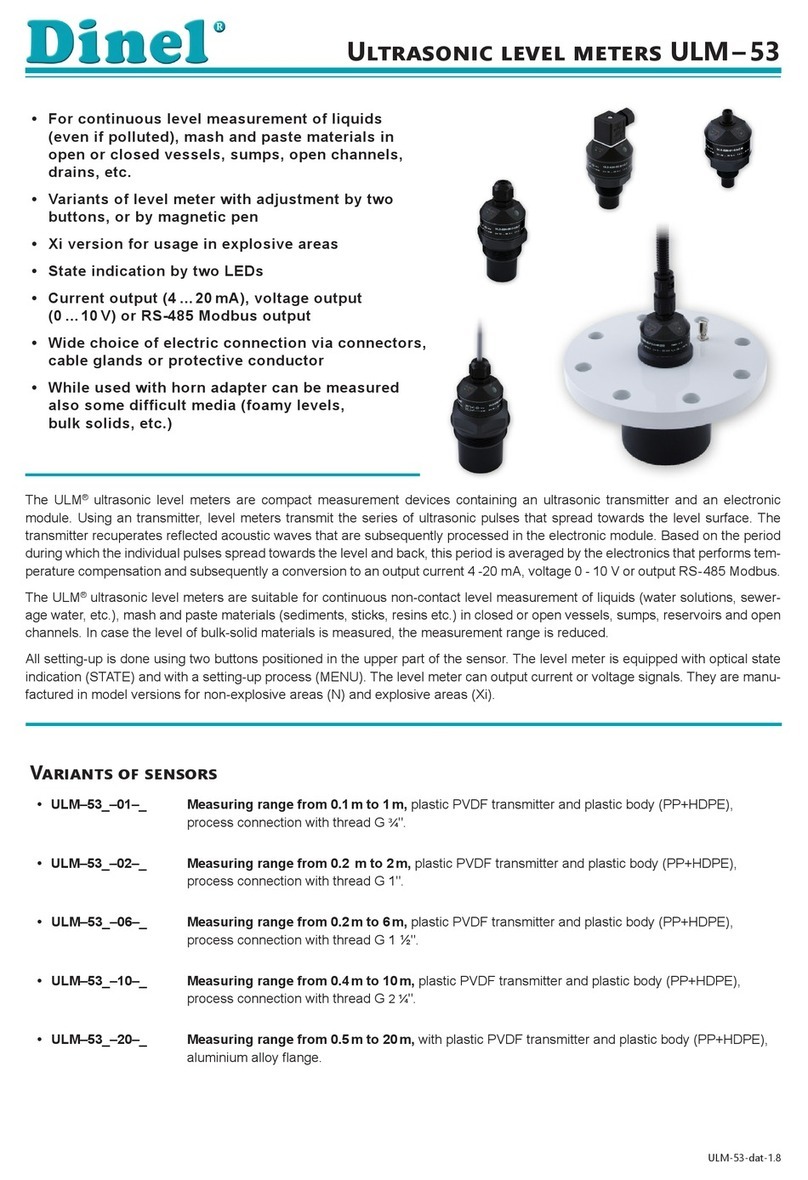
Dinel
Dinel ULM-53 series User manual
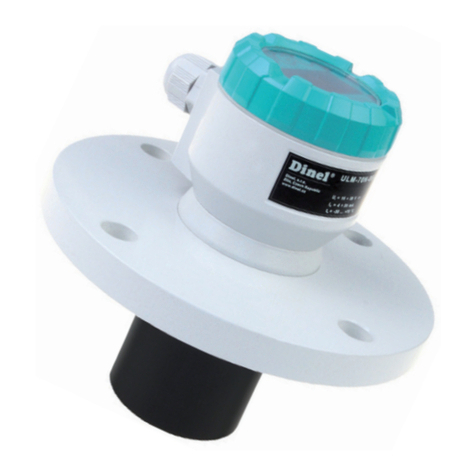
Dinel
Dinel ULM-70 Series User manual

Dinel
Dinel ULM-53 series User manual

Dinel
Dinel ULM-53L User manual

Dinel
Dinel MLM-35 User manual
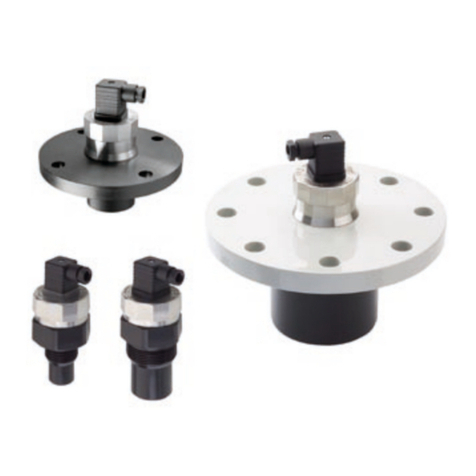
Dinel
Dinel ULM-55N User manual

Dinel
Dinel CLM-36 User manual
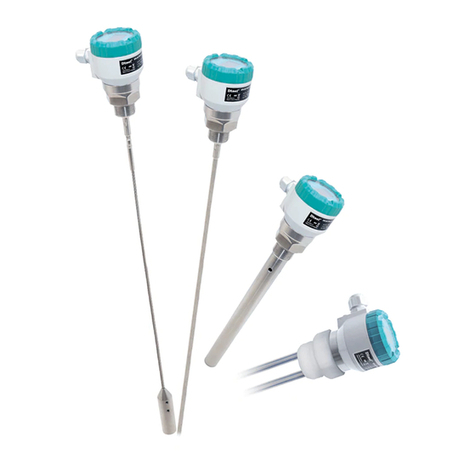
Dinel
Dinel CLM-70 User manual

Dinel
Dinel CLM-36 User manual
